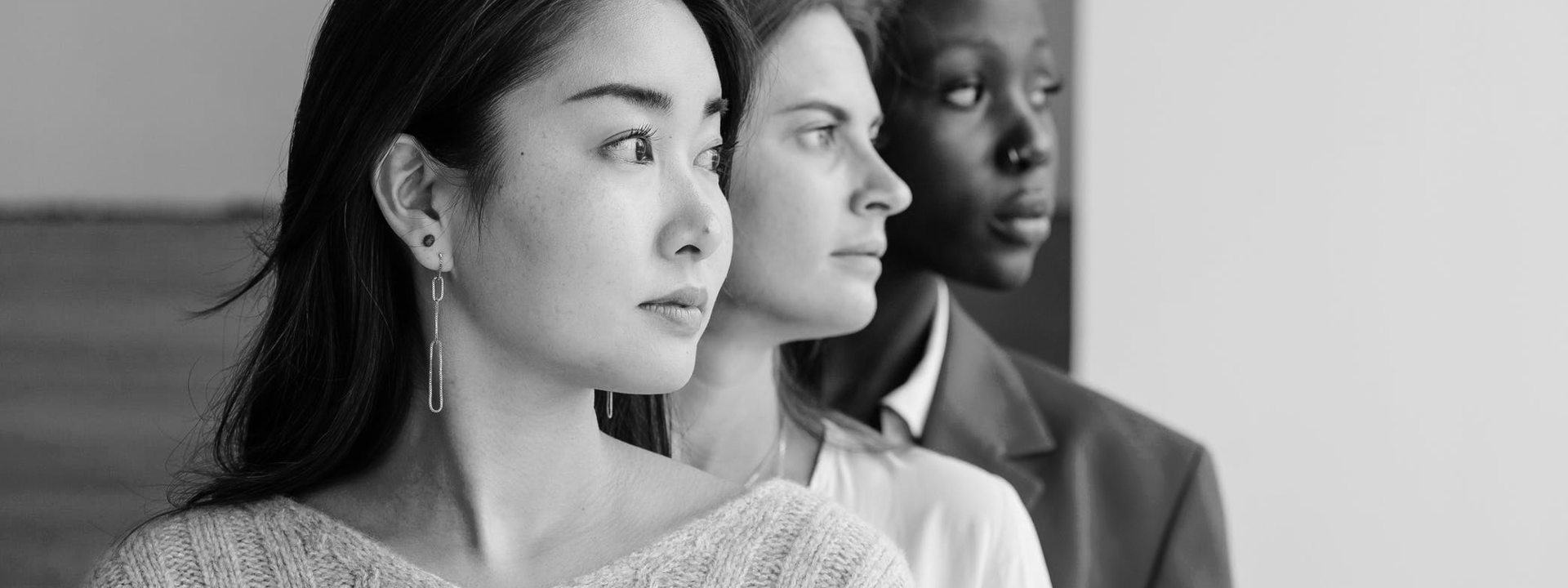Society is more diverse than ever. While many are familiar with gender identities like cisgender, transgender and nonbinary, there are dozens of additional gender identities. According to a 2021 study of 2,000 adults by Bigeye, half of Generation Z and 56% of Millennials think traditional gender roles and labels related to strictly “male” and “female” genders are outdated.
Given these viewpoints, we tackle the question, “what does gender representation look like in the media?” In addition, we’ll examine the importance of gender-inclusion and the steps that could make representation in marketing more equitable.
How is gender equity defined?
According to the World Health Organization, gender describes the socially constructed characteristics of women and men. While male/female sex is biologically determined, gender identity comes from within. Someone who is biologically born “female” may identify as a transgender male and prefer male pronouns.
The World Economic Forum reports at least 1% of adults around the globe describe themselves in a different way rather than male or female, including as:
- Transgender: This gender identity encapsulates a shift from a person’s birth-given gender to another gender that better represents them.
- Non-binary: Instead of being constricted to a “male” or “female” gender identity, nonbinary identities don’t exclusively identify with a single gender.
- Non-conforming: Those with non-conforming gender identities don’t adhere to society’s gender norms.
- Gender fluid: Someone who is gender fluid may change their gender identity frequently or over time. They don’t adhere to a single gender.
Other potential gender identities include genderqueer, agender, transmasculine and transfeminine. Some people create their own gender identities or reject them altogether. It’s important to be mindful of everyone when creating ads.
Gender equality promotes equal opportunities, resources, benefits and services to everyone, regardless of how they identify. According to the Pan American Health Organization, Gender equity relates to “fairness and justice in the distribution of benefits, power, resources, and responsibilities between women and men.”
It’s important for marketers to take all genders into account when creating ads because representation is extremely powerful and can inspire interest and motivation to become a lifelong customer.
Why does gender equity in marketing matter?
To date, much research on gender equity in marketing is related to “female” representation in the media. In the U.S., Statista reports those who identify as female have outnumbered males since at least 2013.
Females make up more than half the population. Reports show that women influence most purchasing decisions, and marketing leaders should use that to influence how they will reach out to their audience. According to an April 2020 whitepaper by SeeHer and IRI:
- Women influence 85% of purchases for consumer goods.
- Campaigns that accurately portray girls and women can increase incremental sales by 200% to 500%.
However, gender inequality still remains in boardrooms. In 2021, the World Federation of Advertisers reported perspectives from six female marketing leaders on the state of gender equity in the industry. As Sara Denby, Head of Secretariat for the Unstereotype Alliance at UN Women, pointed out:
- In 2020, only 7.4% of Fortune 500 companies had women CEOs, which was actually a new record.
- Women hold only 27% of top management jobs in media organizations.
Without representation from women and diverse genders in high-level positions where big-time decisions are made, it’s more challenging to achieve true gender equity in marketing campaigns.
Where we’re still lacking
Despite marketing wins among several big brands exemplifying inclusive ads, American marketers and advertisers still have a long way to go to achieve true equity in messages and campaigns.

The Geena Davis Institute on Gender in Media’s research was originally focused on the entertainment industry and expanded into exploring potential gender bias across various other sectors in order to learn how to better advertise to a broad range of audiences. After the institute examined more than 200 global TV ads, it discovered that:
- Men featured in ads at a ratio of 3 to 2 when compared with women.
- 22% of male characters were shown as leaders, compared to 17% of female characters.
- Men were nearly twice as likely to be shown working than women, with26% of male characters depicted as having an occupation compared to just 11% of females in ads.
These analytics provide companies with immense gender-bias awareness which can lead to brands actively working to challenge stereotypes in their marketing campaigns. Public accountability, gender-inclusive research and progress tracking are steps any brand can take to become more equitable in terms of accurate and respectful representation in marketing.
Gender-inclusive marketing matters
Inclusive marketing matters to consumers and company success. A 2020 survey from Top Design Firms found that 64% of shoppers are likely to buy a product immediately after seeing it advertised if the brand embodied inclusion and diversity. An October 2021 survey by McKinsey & Company found two-thirds of Americans are influenced by their social values while shopping.
Brands that want to be leaders in gender equity within their marketing practices can take the following steps:
- Research their own bias in marketing campaigns and messages.
- Publicize gender equity results and communicate their importance to marketing and advertising partners.
- Include diverse gender representation on marketing teams, especially in senior leadership roles.
- Be conscious of gender bias in ads and actively work to fight it. This can be done when selecting marketing partners and actors/influencers for advertising campaigns.
The world’s brands that are most in touch with their consumers know there’s immense progress to be made in terms of gender equity in marketing. Businesses today can work to address the issue in ads, and they should track and publish their results so they’re held accountable to customers.
